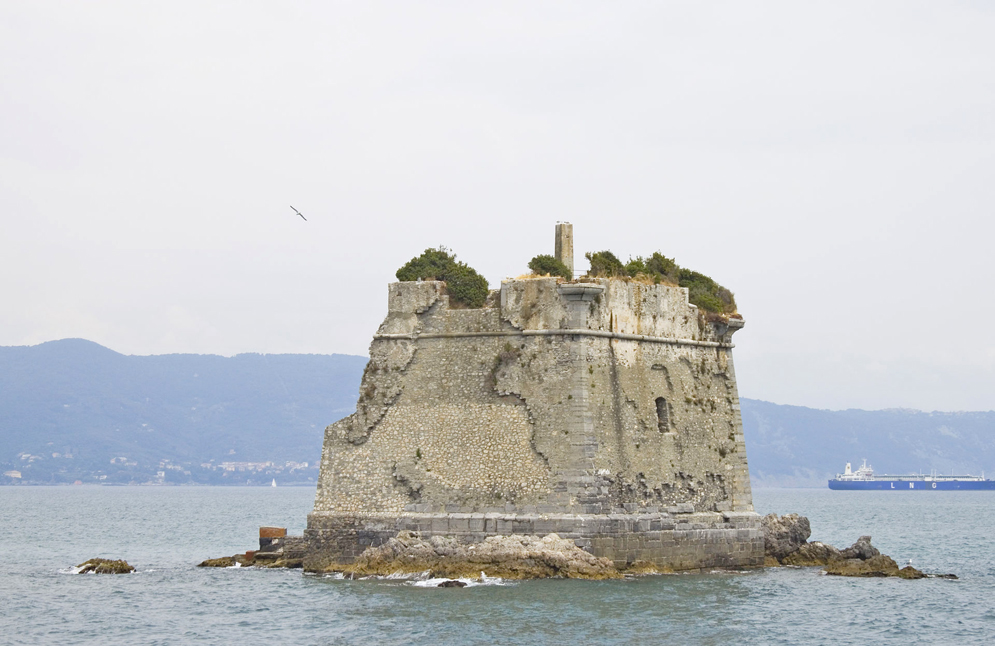The Torre Scola – Scola Tower , or Tower of Saint John the Baptist, is a former military building located beyond the extreme northeast (called Punta Scola) of Palmaria (island) in Porto Venere, in the Gulf of Poets in the province of La Spezia, Italy.
The Torre Scola is part of a defensive system originally desired by the Senate of the Republic of Genoa in the 16th and 17th centuries in order to protect the coast and, consequently, the cities. and peoples. According to some studies, the tower was probably built in the early 17th century for an estimated cost of 56,000 Genoese lira.
It is part, together with the Cavour and Umberto I forts and the Semaphore battery, of the defensive positions of Palmaria.
The tower is pentagonal in shape with an average thickness of the walls of about 4 meters, capable of accommodating up to eight people (eight soldiers, a captain and a master “bombardero”) ten guns and able to cover the arm “on fire” of sea between the bay of Palmaria, the bay of Olivo in Porto Venere and the bosom of Lerici.
Throughout the 20th century, the Torre Scola was restored several times and the site became a popular tourist attraction. The Torre Scola is not often mentioned in the list of the main sights of Italy, but it deserves to be visited.
Access : Coordinates: 44.05175, 9.858278 / The Tôre Scola is located on an islet, beyond the northeastern tip (Pünta Scola) of the island of Parma, between Górfo dea Spèza.
Highlights :
- The Torre Scola was built between 1606 and 1607, when Genoa increased military interest in La Spezia in order to protect the territory from the Spaniards and Turks.
- With the Napoleonic domination it was at the center of the naval clashes of 23 January 1800 between the English and French fleets, to remove the latter from the Gulf of La Spezia, so much so that for the damage suffered by the cannon fire (gutting of the curtains on one side of the tower it was decided to total abandonment already in the first half of the nineteenth century.
Go next : The Palmaria island, together with the other islands of Tino and Tinetto, Porto Venere and the Cinque Terre, has been included among the UNESCO World Heritage Sites.

